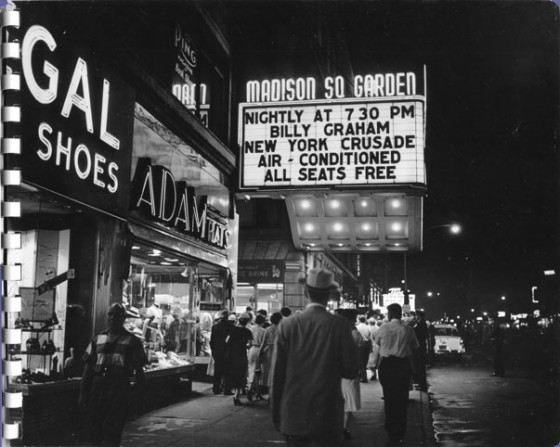
From Garth Rosell’s excellent insider-history on the rebirth of evangelicalism in mid-twentieth century America, entitled The Surprising Work of God:
At the center is the cross . . .
Around the cross, and flowing out from the historical teachings associated with it, are four additional convictions that more any others have characterized the evangelical movement throughout its history:
(1) a shared authority (the Bible);
(2) a shared experience (conversion);
(3) a shared mission (worldwide evangelization); and
(4) a shared vision (the spiritual renewal of church and society).
Taken together, these five distinguishing marks have provided the theological and practical glue that has held the constantly shifting coalition called evangelicalism together for nearly three centuries through many toils and snares and across many social, geographical, and political boundaries. . . .
Rosell goes on to enumerate some key movements that influenced American evangelicalism’s self understanding:
Although American Evangelicalism, as an identifiable historical movement, was born in the revivals of the Great Awakening, its core values were a legacy from many centuries of Christian history.
From Continental Pietism, the powerful seventeenth- and eighteenth-century renewal movement led by Philip Jacob Spener and August Francke, evangelicals drew
- a passion for missionary outreach,
- a new emphasis on holy living, and
- an active concern for one’s neighbor.
From Count Zinzendorf and the Moravians they learned
- the centrality of Christian community,
- the importance of missions, and
- a passion for Christian unity.
From Protestant reformers, including Martin Luther, Ulrich Zwingi, John Calvin, and Menno Simons, they inherited
- a love for the Bible,
- a renewed understanding of the doctrine of justification by grace through faith,
- a new boldness in reforming the church and preaching the Word, and
- a fresh understanding of God’s majesty and sovereign power.
From the great martyr tradition of the Christian church they drew
- an understanding of the enormous cost of discipleship and
- the confidence that, by God’s grace, it was possible to endure suffering.
From contemporaries in the British Isles such as John and Charles Wesley, George Whitefield, and Howel Harris, America’s eighteenth-century evangelicals drew
- a passion for righteousness,
- a love for social justice,
- some practical principles for making disciples, and
- a fervent yearning for for genuine spiritual awakening.
From America’s African American congregations—what has often been called “the invisible church”—they came to learn
- a love for the Bible,
- a new power in preaching,
- a fresh spontaneity in worship,
- a renewed concern for the practical needs of the community, and
- a willingness to take a stand against injustice.
All of these movements—and others that may be listed as well—helped shape and deepen American evangelicalism’s self understanding. Among its many predecessors, however, none left a deeper impact than the heritage of the English and American Puritans.
—Garth M. Rosell, The Surprising Work of God: Harold John Ockenga, Billy Graham, and the Rebirth of Evangelicalism (Grand Rapids: Baker Academic [a division of Baker Publishing Group], 2008), 26-27, 28 [my emphasis and formatting]. Used by permission.


















